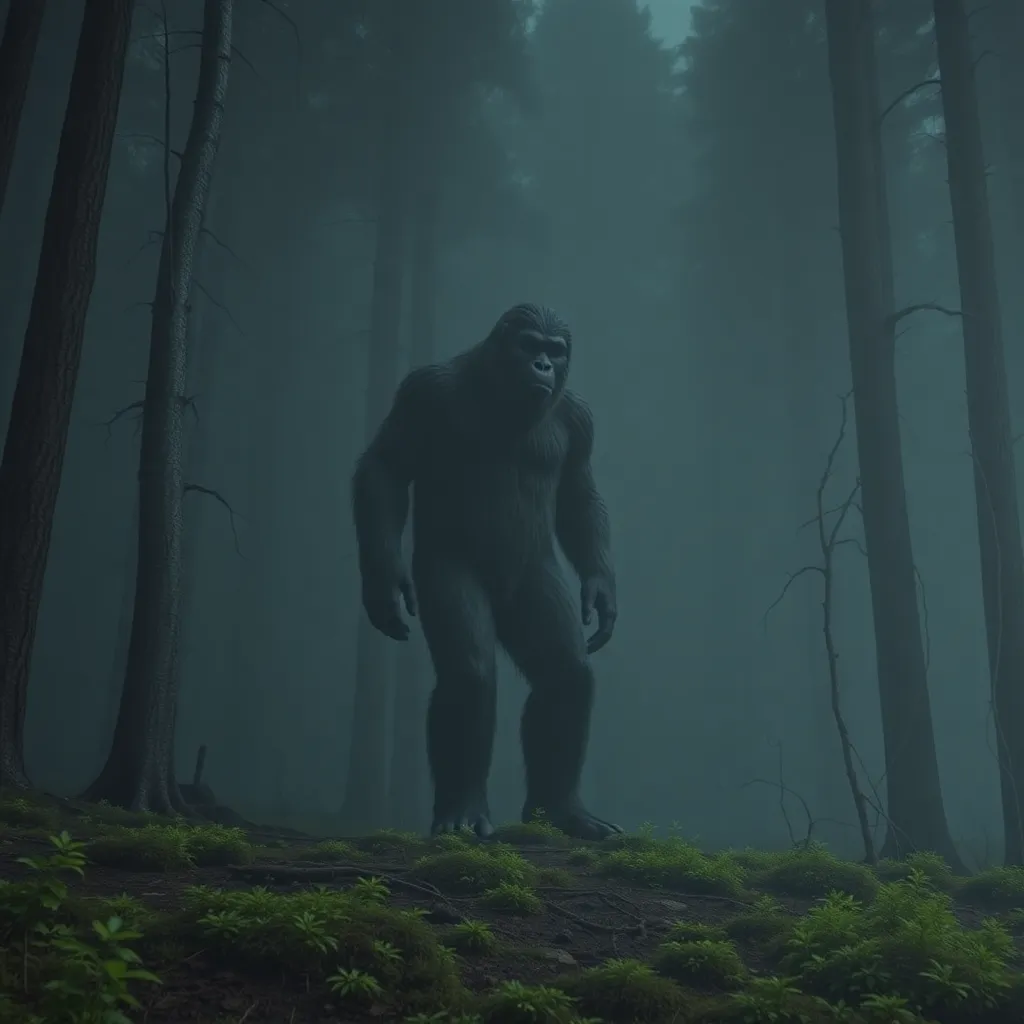The Bigfoot Hoax: Separating Fact from Fiction
I. Introduction
Bigfoot, also known as Sasquatch, is a legendary creature said to inhabit the forests of North America. This elusive being is often depicted as a large, hairy humanoid, standing anywhere from 6 to 10 feet tall. The cultural significance of Bigfoot spans decades and has become a staple in folklore, popular culture, and cryptozoology.
The Bigfoot phenomenon has not only intrigued amateur enthusiasts but has also captured the attention of scientists, filmmakers, and the general public. Its impact on popular culture is evident in numerous films, documentaries, and television shows that explore the mystery surrounding this creature. As a result, the Bigfoot narrative continues to evolve, blurring the lines between fact and fiction.
This article aims to explore the facts and fiction surrounding Bigfoot claims, delving into historical context, scientific analysis, media influence, and psychological factors that contribute to the ongoing fascination with this enigmatic figure.
II. Historical Context of Bigfoot Sightings
The history of Bigfoot sightings can be traced back to early reports and folklore. Indigenous tribes across North America have long told stories of a giant man-like creature that roams the forests. These legends often serve as cautionary tales or explanations for unexplained phenomena.
One of the most significant influences on the Bigfoot narrative comes from Native American legends. Many tribes, including the Salish and the Cherokee, have their own versions of the Sasquatch myth, often describing it as a guardian of the forest or a being that embodies nature’s spirit.
Key sightings and events have greatly shaped public perception of Bigfoot. The 1958 discovery of large footprints in Bluff Creek, California, by a construction worker named Jerry Crew brought the creature into the public eye, leading to a surge in reported sightings. Over the years, various claims and encounters have added fuel to the Bigfoot legend, but many remain unverified.
III. The Science Behind the Bigfoot Debate
Scientific examination of physical evidence has played a crucial role in the Bigfoot debate. Proponents of Bigfoot often cite footprints, hair samples, and audio recordings as proof of its existence. However, these pieces of evidence have faced significant scrutiny.
- Footprints: Many footprints attributed to Bigfoot have been analyzed, but most turn out to be hoaxes or misidentified animal tracks.
- Hair Samples: Several hair samples claimed to be from Bigfoot have been tested and identified as belonging to known animals, such as bears or deer.
- Audio Recordings: Sounds attributed to Bigfoot have often been dismissed as the calls of known wildlife, including coyotes or owls.
The role of expert analysis, including that of biologists and anthropologists, is vital in evaluating these claims. Many experts emphasize the lack of credible evidence supporting the existence of Bigfoot, pointing to the absence of a body, consistent DNA samples, or clear photographs.
Common scientific explanations for reported sightings often include misidentification of animals, psychological phenomena, and the influence of environmental factors.
IV. The Role of Media in Propagating the Hoax
The media has played a significant role in shaping the Bigfoot narrative. Documentaries, films, and television shows have popularized the legend, often sensationalizing claims and sightings.
One of the most notable pieces of media is the 1967 Patterson-Gimlin film, which purportedly shows a female Bigfoot walking through the woods. This film has been analyzed extensively, with many experts deeming it a hoax while others argue for its authenticity. Regardless, it has cemented itself in the public consciousness as a key piece of Bigfoot evidence.
In the modern era, social media has further influenced Bigfoot narratives. Online communities and platforms allow for the rapid sharing of sightings, theories, and hoaxes, creating a feedback loop that perpetuates belief in the creature.
V. High-Profile Hoaxes and Their Consequences
Throughout the years, several notable hoaxes have emerged, casting doubt on the legitimacy of Bigfoot sightings. Among these are:
- The 2008 Georgia Bigfoot Hoax, where two men claimed to have discovered a Bigfoot body that was later revealed to be a costume.
- The 1973 “Skunk Ape” photographs, which turned out to be manipulated images.
- The “Bigfoot Autopsy” video from 2006, which was later confirmed to be a fabrication.
The consequences of these hoaxes extend beyond mere embarrassment; they have significantly impacted public trust and scientific inquiry into cryptids. Many researchers find it increasingly challenging to take reports seriously due to the prevalence of hoaxes.
In terms of ethics, the act of hoaxing raises questions about the responsibility of individuals in the context of folklore and the potential harm it can cause to genuine inquiry.
VI. Psychological Factors Contributing to Belief in Bigfoot
The allure of cryptids like Bigfoot is rooted in psychological factors. Many individuals are drawn to the mystery of unknown creatures, often fueled by a desire for adventure and the thrill of the unexplained.
Eyewitness testimonies and memory distortion also play a significant role in belief. The brain’s tendency to fill in gaps can lead to altered recollections of events, making eyewitness accounts less reliable.
Additionally, confirmation bias—where individuals seek information that supports their beliefs—can perpetuate the belief in Bigfoot, regardless of contradictory evidence. This psychological phenomenon helps explain why some people remain steadfast in their belief despite a lack of scientific support.
VII. Current Trends and Future of Bigfoot Research
In recent years, advancements in technology have impacted the field of cryptozoology. Tools such as drones, camera traps, and environmental DNA sampling have opened new avenues for research, allowing for more thorough investigations into reported sightings.
Various communities and organizations have emerged, dedicated to the research and documentation of Bigfoot encounters. These groups often host expeditions and encourage citizen science, inviting enthusiasts to contribute to ongoing research efforts.
While skepticism remains prevalent, the potential for future discoveries continues to intrigue both believers and non-believers alike. The intersection of technology and cryptozoology may yield new insights, but it will likely continue to be met with scrutiny.
VIII. Conclusion
In summary, the legend of Bigfoot encompasses a rich tapestry of folklore, psychological intrigue, and scientific inquiry. From its historical roots in Native American legends to its modern portrayal in media, the Bigfoot phenomenon raises important questions about belief, evidence, and the nature of folklore itself.
Critical thinking and skepticism are essential when examining claims surrounding Bigfoot. As the legend endures, it serves as a reminder of humanity’s fascination with the unknown and the stories we create to explain our world.
Ultimately, the enduring legacy of Bigfoot in society reflects our collective yearning for mystery and the exploration of what lies beyond the realm of the known.
https://www.youtube.com/watch?v=GmtFdSbmJvE



